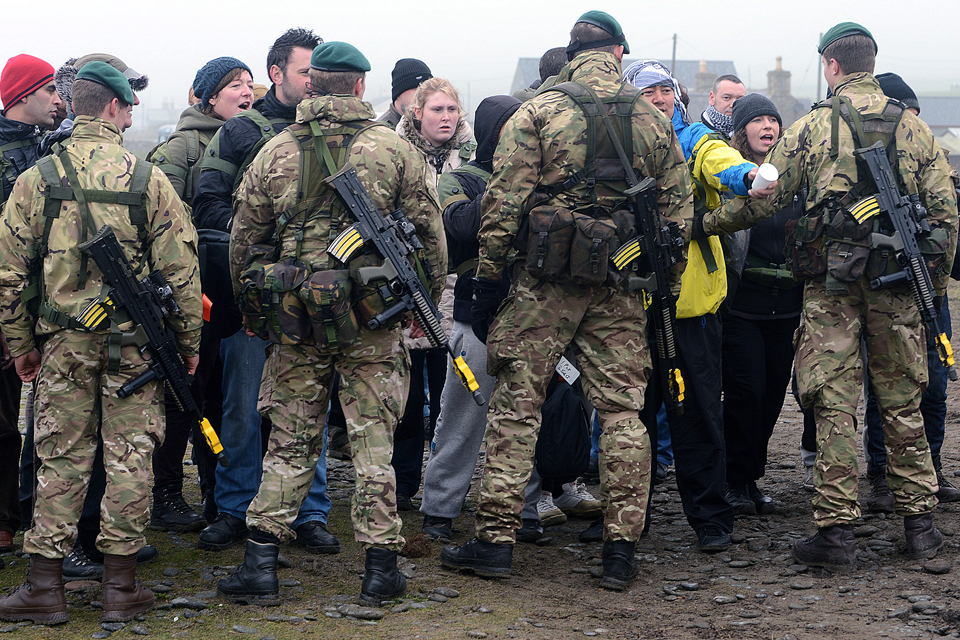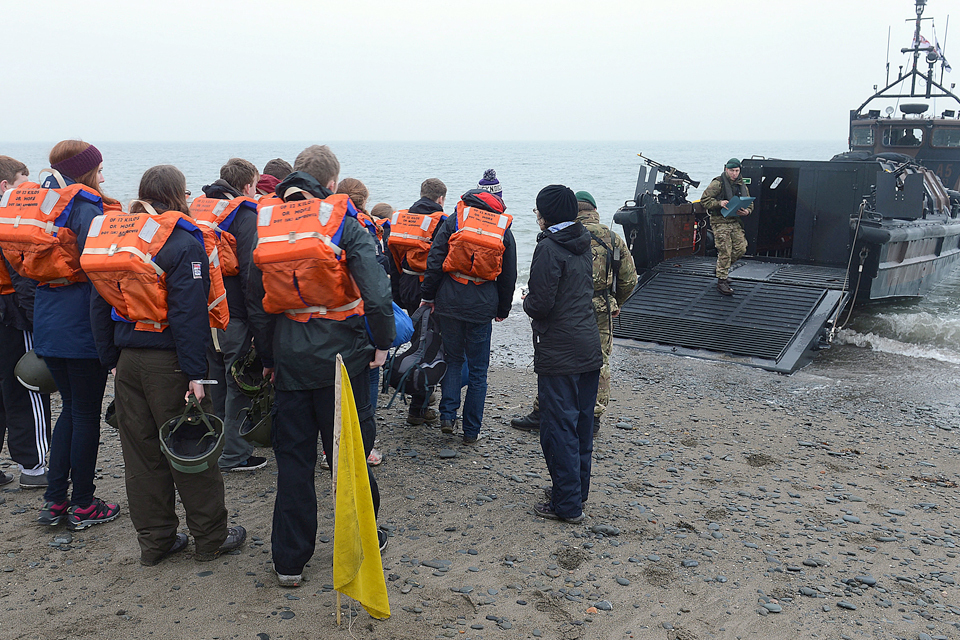Royal Navy evacuates refugees as part of Nato exercise
As part of a Joint Warrior scenario, the Royal Navy's fleet flagship HMS Bulwark has safely evacuated refugees from a war-torn country.

Royal Naval personnel and Royal Marines at a facility for processing entitled citizens [Picture: Petty Officer Airman (Photographer) Sean Clee, Crown copyright]
More than 60 naval personnel from the Plymouth-based amphibious assault ship and around 30 Royal Marines of 539 Assault Squadron set up a facility on Craignarget beach near Stranraer to process entitled citizens.
The evacuation scenario for Exercise Joint Warrior had to be set up as if the Royal Navy were rescuing UK citizens for real.
Tents providing medical help and food plus a media cell were set up, with Royal Marines providing a ring of security to ensure a well-managed situation for both the naval personnel and those being evacuated.

Royal Marines providing a ring of security for both the naval personnel and those being evacuated [Picture: Petty Officer Airman (Photographer) Sean Clee, Crown copyright]
Exercise planners ensured some of the actors playing those hoping to be evacuated presented a variety of issues for the Bulwark team to deal with.
These included non-entitled, and subsequently angry, locals as well as pregnant women on the verge of giving birth and people determined to try and outrun the Royal Marines in a bid to reach the ship.

Entitled citizens are checked to ensure they aren't carrying anything they shouldn't be [Picture: Petty Officer Airman (Photographer) Sean Clee, Crown copyright]
Aircraft handler Naval Airman Ella McKenzie said:
Both in real life and for the exercise we are given a list of those people entitled to be evacuated.
We then check they aren’t carrying anything they shouldn’t be and take them to our tents to receive medical treatment, if needed, or a hot drink and food, before they are escorted onto the ship.
Navy personnel provide the processing side of things while the Royal Marines provide us with protection from those who may not be happy that they are not entitled to be evacuated by the UK and also any rebel forces that could be operating nearby.
My role today is as a researcher on the team that checks the visitors over, and, as I was patting down the lady playing a pregnant non-entitled civilian, she began to pretend to give birth, which was definitely a surprising part of the role play.

A Royal Navy medic comes to the aid of a pregnant woman during the exercise [Picture: Petty Officer Airman (Photographer) Sean Clee, Crown copyright]
The evacuation of UK citizens from unsettled situations across the world is a key role for the Royal Navy.
Recent examples include HMS Albion rescuing 1,150 holidaymakers from Spain stranded by the Icelandic volcanic ash cloud in 2010 and in 2011 HMS York evacuated 43 personnel from Libya during the civil uprising.
Commander Gavin Edward, weapon engineer officer on board HMS Bulwark, said the training was essential for naval operations across the globe.

Naval personnel were given lists of people entitled to be evacuated [Picture: Petty Officer Airman (Photographer) Sean Clee, Crown copyright]
He added:
Humanitarian disaster relief and the extraction of entitled personnel are 2 key components of Royal Naval operations.
Exercises like these give us a chance to ensure that skill base is constantly refreshed.
In 2006 HMS Bulwark evacuated people from Lebanon to Cyprus so we are no stranger to this type of requirement ourselves.

Entitled citizens are escorted onto the landing craft for transit to HMS Bulwark [Picture: Petty Officer Airman (Photographer) Sean Clee, Crown copyright]
Exercise Joint Warrior involves all 3 military services but is Europe’s largest naval exercise.
More than 34 warships are taking part from the UK, US, the Netherlands, France, Denmark, Turkey and Norway with the aim of testing the high readiness of the forces involved and the range of capabilities available for short-notice operations across the globe.
The personnel involved will use the exercise to prepare for imminent deployments to the Atlantic, Mediterranean and Middle East where they will carry out activities such as maritime security operations, reassuring allies and providing humanitarian disaster relief.